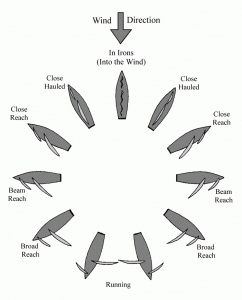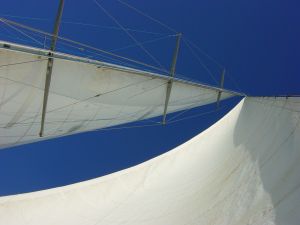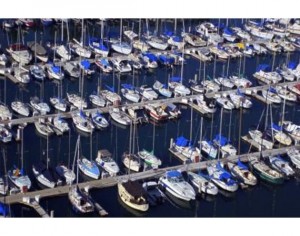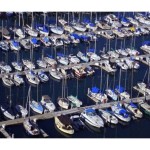How to sail – basics of sailing
Due to the lack of professional sailing guides online which explain how to sail we decided to publish an article about basics of sailing. However you should know that theory is not enough and the only way to become a professional sailor is on the sailboat where you gain practical knowledge. But before you board the sailboat.you should learn some basics about sailing that will help you get started.
How to stop a sailboat?
This is the most important skill to learn. It will make you more secure and increase your confidence on all the steps that you will take. None of the boats have a break,
 so you cannot just press something and the boat will stop. If you are sailing with a sailboat without engine the easiest thing to stop a boat is to turn it into the wind. This will make your sailboat stop. Second step to take is to lower your sails and navigate with turned on engine. It is much easier to navigate with engine running, because you can stop the boat with the reverse.
so you cannot just press something and the boat will stop. If you are sailing with a sailboat without engine the easiest thing to stop a boat is to turn it into the wind. This will make your sailboat stop. Second step to take is to lower your sails and navigate with turned on engine. It is much easier to navigate with engine running, because you can stop the boat with the reverse.
However be careful on the current. Current can change the movement of the boat and needs more experience person to successfully steer. The easiest way is to turn the boat away from the current and put a engine slightly in reverse so that it will not move.
.
Sailing and wind

Sailboats have the ability to sail in almost any directions with the correlation to the wind. You can sail with the wind, when the wind is blowing from the side and almost against the wind. The only direction that you cannot sail is against the wind and around 15-20 degrees left and right (from where the wind is blowing). This is why you immediately stop when you turn against the wind. If the wind is blowing from the left or right side the boat is leaning more. If you are a novice it is unwise to learn how to sail in strong wind. Wait until there is pleasant wind, weaker than 10 knots and only then lift up the sails and start sailing.
Different type of Sails
Usually sailboats have two sails one in the front and one in the back of mast. Front sail is called Genoa or Jib and back sail is called Main Sail. There are two types of sails depending how they get up on position.
First is standard sail with lazy bag. This is the type of sail that is folded on boom and covered in lazy bag. Whenever you need a sail you need to lift it whole till the top of the mast.
Second type of sail is called Roll Sail.  As the name already specifies the sail is rolled in mast and you need to pull it out of the mast. Roll Genoa (Jib) is rolled on the fore stay – the rope from bow to the top of the mast. Advantage of roll sails are that you can easily open or close only a part of the sail depends of the strength of the wind. In stronger wind roll sail makes it possible to you can open only smaller part of the sail.
As the name already specifies the sail is rolled in mast and you need to pull it out of the mast. Roll Genoa (Jib) is rolled on the fore stay – the rope from bow to the top of the mast. Advantage of roll sails are that you can easily open or close only a part of the sail depends of the strength of the wind. In stronger wind roll sail makes it possible to you can open only smaller part of the sail.
For inexperienced sailors it is better to learn on a sailboat with Roll Sails. However if you have any problems with the wind or leaning you need to be prepared which rope is tightening the sail, so you can lose it in a second. If the rope that is tightening the sail is loose the boat will lose its power and will eventually stop.
Leaving the dock
First thing that you need to do before leaving the docks is prepare sailboat. You need to check the weather report for your planned period of staying on the sea and plan your sailing route (make navigation plan). 
If you are going for a longer period make sure everything is in order and you have all the supplies. Take enough time to ensure there is enough food and drink on the boat and if you have enough fuel. Check engine if it is working and prepare the sails. Do not forget to brief the crew on how you will maneuver from the docks.
After all preparation you need to untie the ropes. First the ones that are connected to the docks and later ones the one that goes into the water – moorings. Some sailboats are tied only with the ropes to the docks. First untie the one in front of the boat and slightly push the boat away from the dock. Then untie the rest.
Leaving and landing the docks is really difficult so it is good to have help of a crew or even better someone with the experience. No matter how experienced you are do not attempt to leave the docks with lifted sails. Always leave the docks with the engine.
Quick check before you leave the docks:
- Obtain last weather report
- Give crew a safety briefing
- Ensure there is enough Food and drink
- Prepare Navigation plan
- Check Engine and see if there is enough fuel
One or two sails (when to reduce sails)
When you have left the docks and you are in the open sea and you have decided that the boat is ready for sailing (prepare the boat for leaning) you can lift the sails. However be careful to check how strong the wind is blowing and with those details decide accordingly to lift only one or two sails (depending on the strenth of the wind).
 There is an unwritten rule that you need to reduce sails if the wind is stronger than 15 knots. However be careful with the sails and try to get used to the leaning and do not exaggerate (even with the winds less then 15 knots). When you are comfortable with the leaning you can open more sail but be careful on refills. This is a shock of a stronger wind that additionally leans a boat.
There is an unwritten rule that you need to reduce sails if the wind is stronger than 15 knots. However be careful with the sails and try to get used to the leaning and do not exaggerate (even with the winds less then 15 knots). When you are comfortable with the leaning you can open more sail but be careful on refills. This is a shock of a stronger wind that additionally leans a boat.
Anyhow when you get used to one sail you can also lift the second one. Do open the both sails at the beginning.
